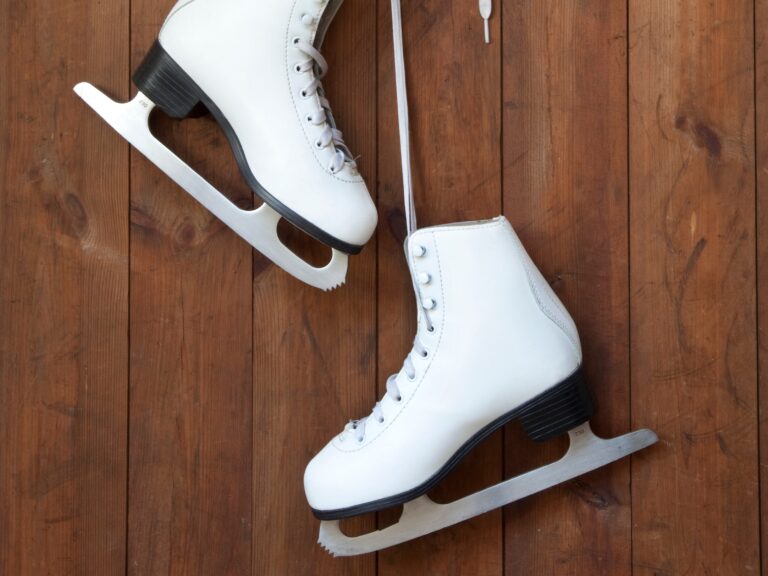The first time you ice skate can be daunting. There are so many things to think about: how do you get onto the ice? How do you stop? How do I turn? It is an odd thing to have two blades strapped to your feet while you slide around on an extremely slippery surface: ice! It may seem unnatural at first, but over time, it can become second nature. The good news is that with a little guidance, these worries will melt away in no time!
In this article, we will answer all of your questions on what it’s like to start skating for the first time. All of our advice comes from some of the best professional ice skaters out there!
How Do You Get Onto the Ice?
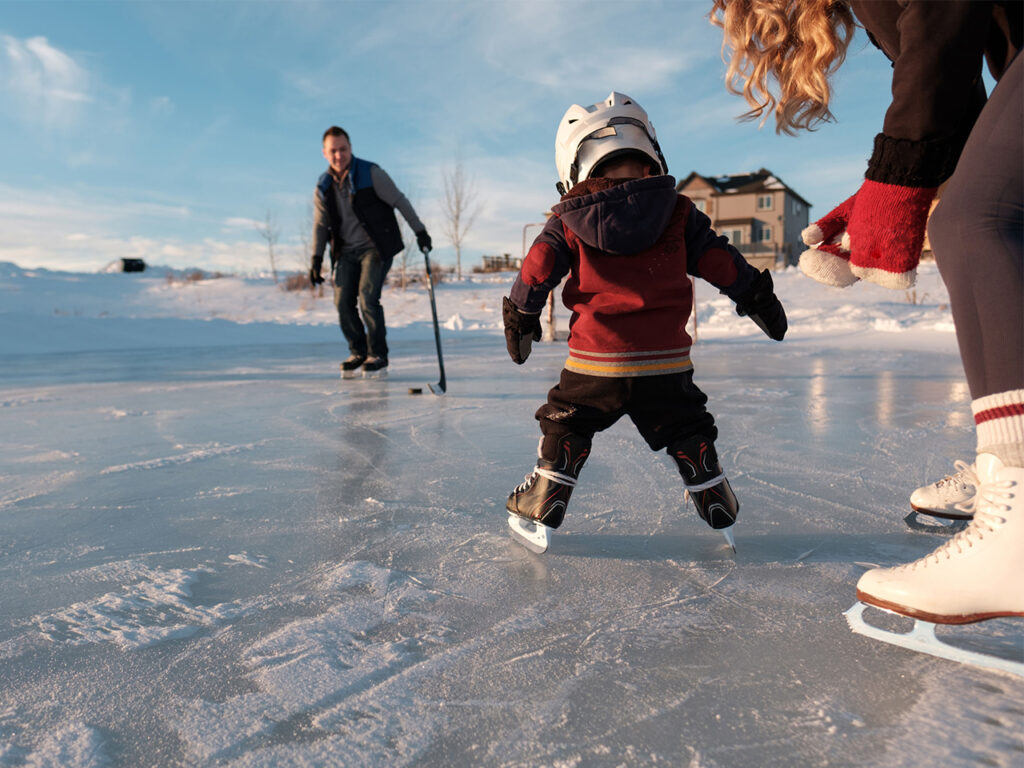
Sharpen your skates before you start skating so that they will glide along the ice smoothly and allow you to carve the ice to help you turn and stop effectively. Skate sharpening is the first step to ensure your skates are ready to hit the ice. For getting your skates sharpened, see https://sparxhockey.com/pages/skate-sharpening-near-me.
The best way to start is by taking a few short strides on solid ground and then just jumping off from there. You don’t want your first experience with skating to be too hard, so you must take this moment to make sure that you have enough space around yourself before making your jump. It also helps if someone has helped skate out some of the snow for you to avoid an uncomfortable landing!
What to Wear When Ice Skating for the First Time?
First, dress warmly! That means layers — think about what would keep you both dry and comfortable outside while still being breathable against all those cold surfaces inside. Boots are great because they give you a big boost up to the skate. A hat and winter mittens are also very helpful since your extremities will be most susceptible to frostbite in cold weather. A pair of long underwear would also be a really good idea to wear too.
What Should I Bring When Ice Skating?
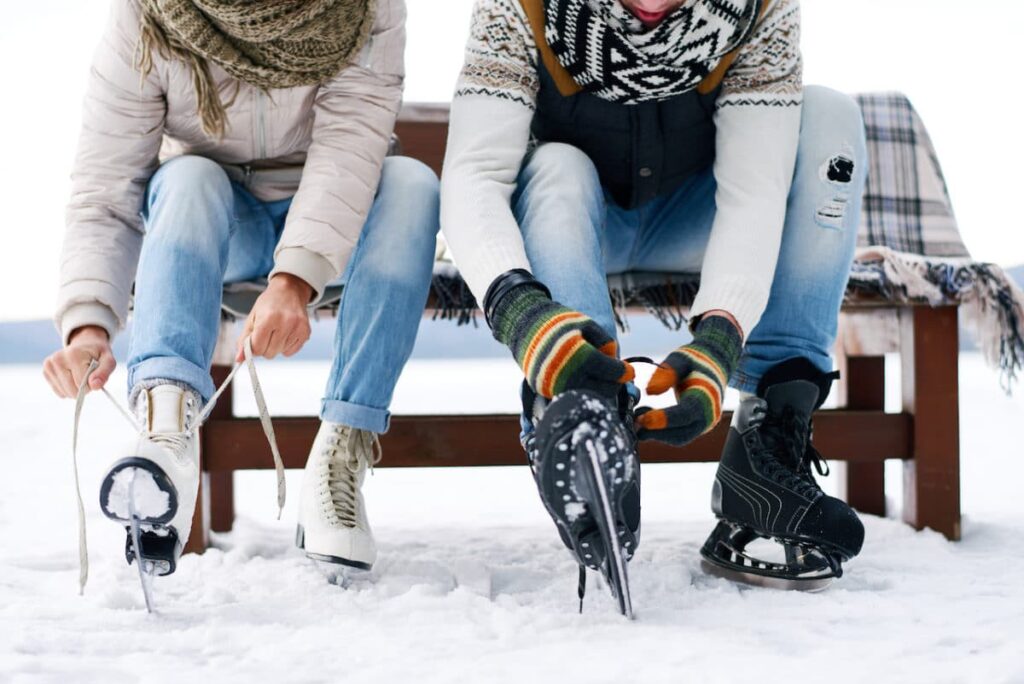
Ice skate rentals usually provide everything you need — skates, helmets, gloves, pads on key areas of skin like ankles and knees, etc., so all that’s left is remembering or bringing an extra set of clothes (just don’t forget hand warmers!), water bottle if desired/needed/allowed by rink policies), snacks (peanut butter crackers are easy and protein-packed!), hair tie (for securing braids)
Teach Yourself How To Ice Skate from Home
There are ways to learn to ice skate on your own at your house too. Of course, you can’t learn from just watching a YouTube video (or reading an article). You have to get out there and actually do it.
- If you have access to a frozen pond, the best way is skating with someone who knows how. You can also skate with an iced-over sidewalk or ice rink (if it’s open). Make sure that there are no cars parked nearby before skateboarding on those surfaces.
- You could take your phone to the ice rink and access some YouTube videos and then try it what you learn right then and there. There are many YouTube videos and websites dedicated to teaching yourself how to ice skate from home – some even include music. Just be sure to put your phone down or in your pocket before you actually get out there on the ice.
Put Your Weight On One Foot At A Time
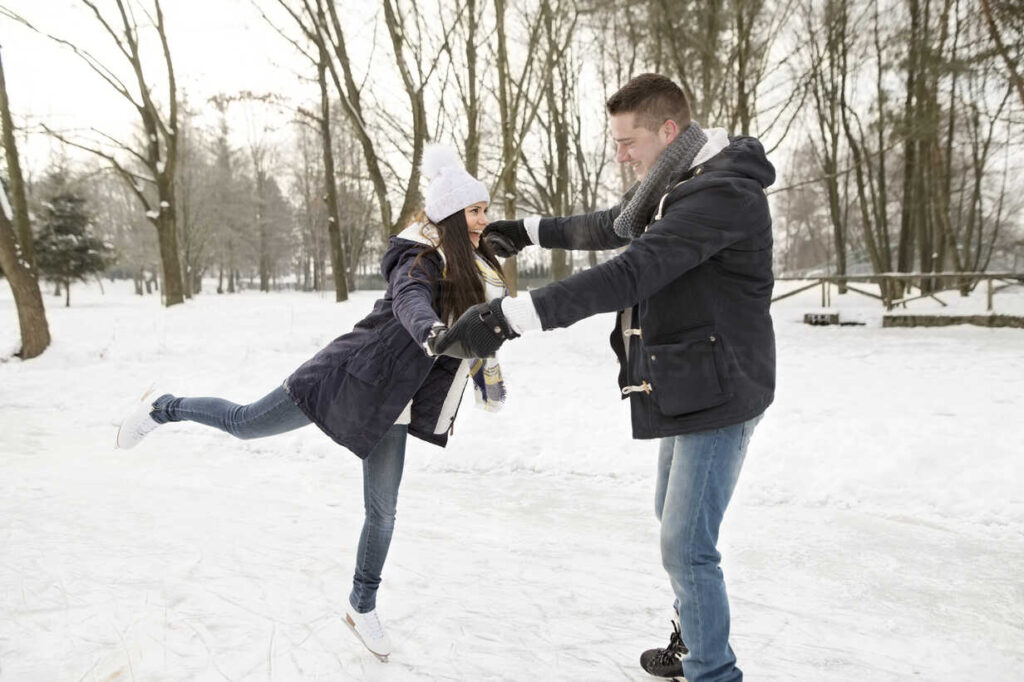
It might take some time for your coordination skills to kick in if this is your first time on skates — so be patient! Keep one foot on the ground at all times when starting out until you feel comfortable balancing without any stability aide.
Start With A Basic Footwork Pattern
Place your weight on one foot and, with the other, glide it forward in a half-circle, then bring it back to where you started from. Repeat this motion until you feel comfortable enough to skate without any trouble of slipping around or losing balance.
One Easy Trick: Cheat Your Ankles, So They Don’t Slide Around Too Much
Your ankles can easily slip too much when skating, which will make balancing even harder — but don’t worry – there’s an easy trick that’ll fix this problem right up!
Bend both knees by squeezing them together so they’re as close as possible to each other while still making contact with the ice (without putting weight on them). Then, just skate normally.
Throw Your Arms Out For Balance, And You’ll Be Good To Go!
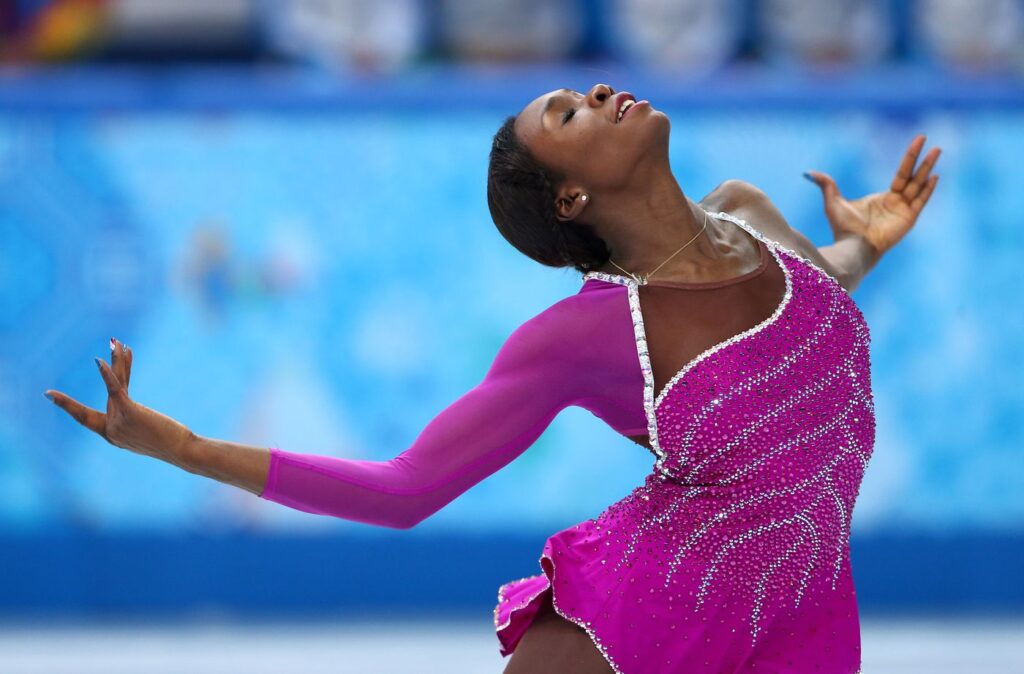
A common mistake first-time ice skaters make is that they don’t use their arms for balance when skating around the rink. If you’re having trouble with this, then try throwing your arms out and holding them straight in front of you while keeping your elbows at about a 45-degree angle, so it’s easy to bend each elbow or swing an arm forward without getting off balance.
Don’t Worry About Speed Just Yet: Come In Slow At First, Get The Hang Of It Before Trying Faster Paces
One last tip before trying to ice skate on your own – we’re not going to talk about speed just yet.
It’s better to come in slow at first and get the hang of it before trying faster paces, as that will help you gain confidence on the ice. As long as you’re comfortable with how your body feels while skating around, then go ahead and skate for a little bit longer if needed!
But it is certainly worth your while, and safer, to take your time when starting to skate. You don’t need to go fast, this isn’t a speed skating competition. You can skate slowly, make long, sweeping turns, and take your time slowing down too.
Grab some friends or family members and head over to an ice rink near you soon, ice skating is a blast, and while it will take some practicing, balancing, and time to learn, it’s worth it!

